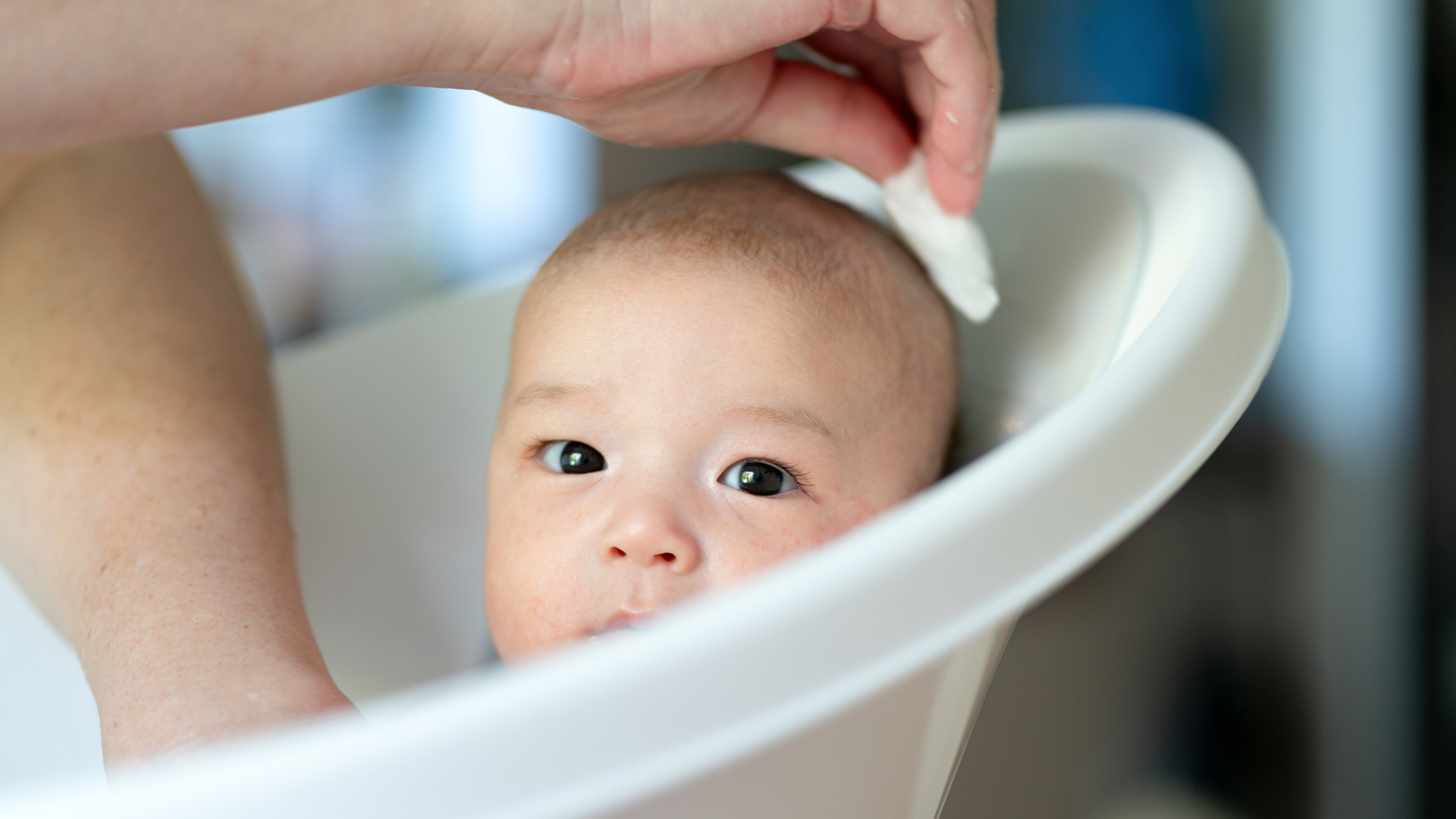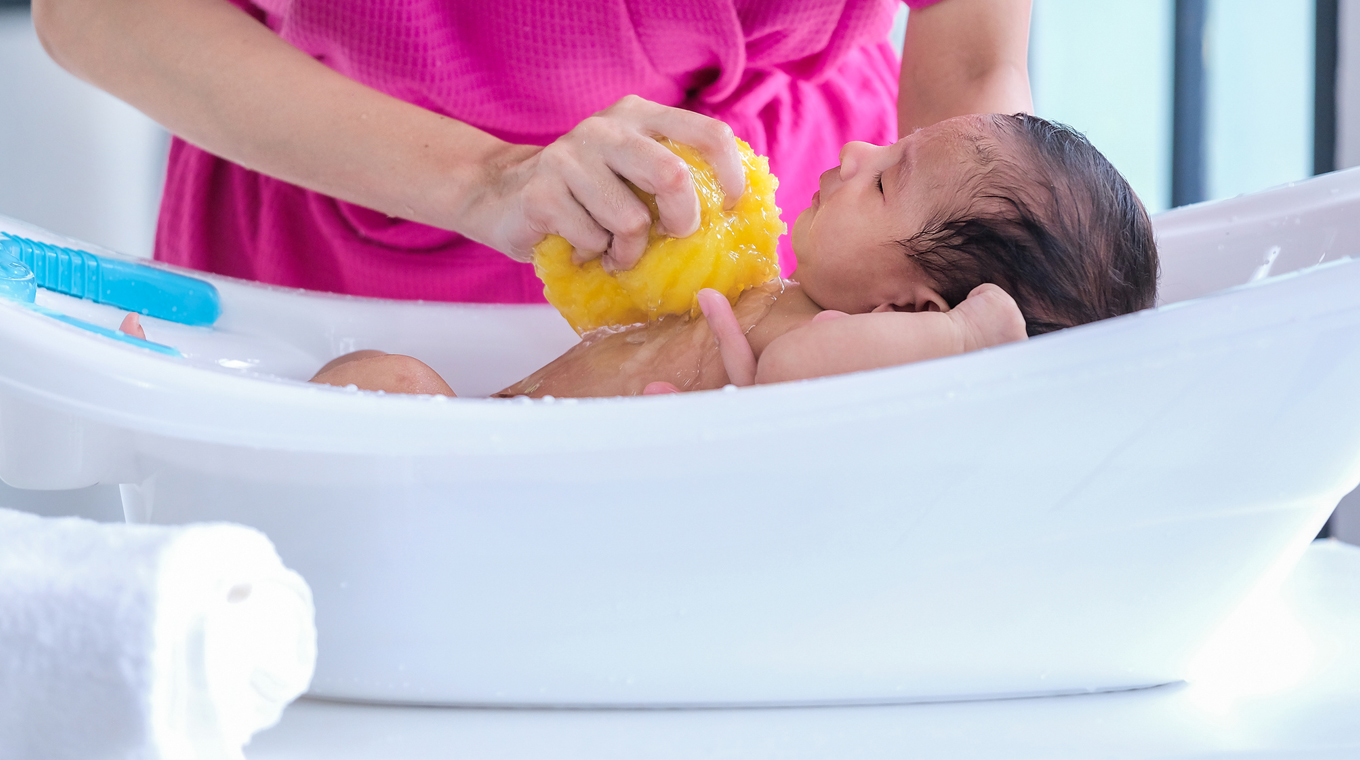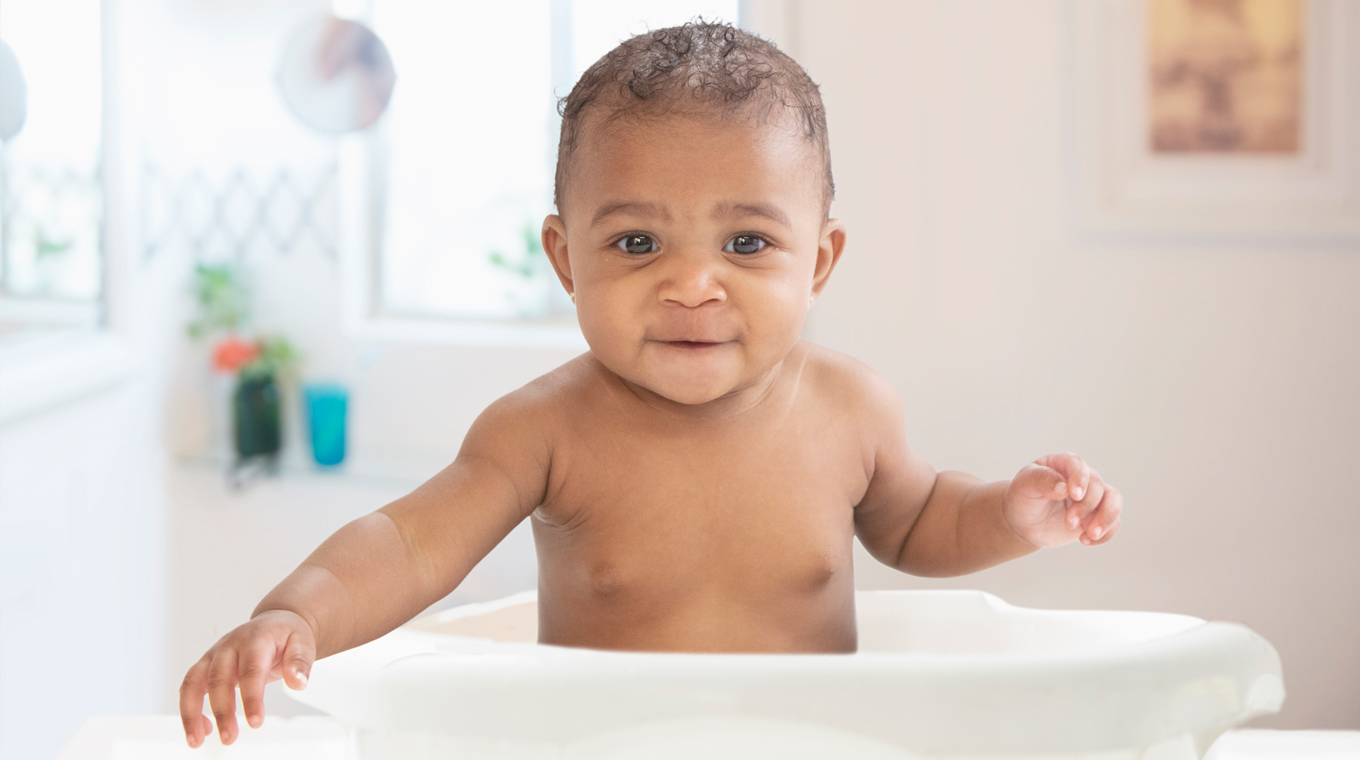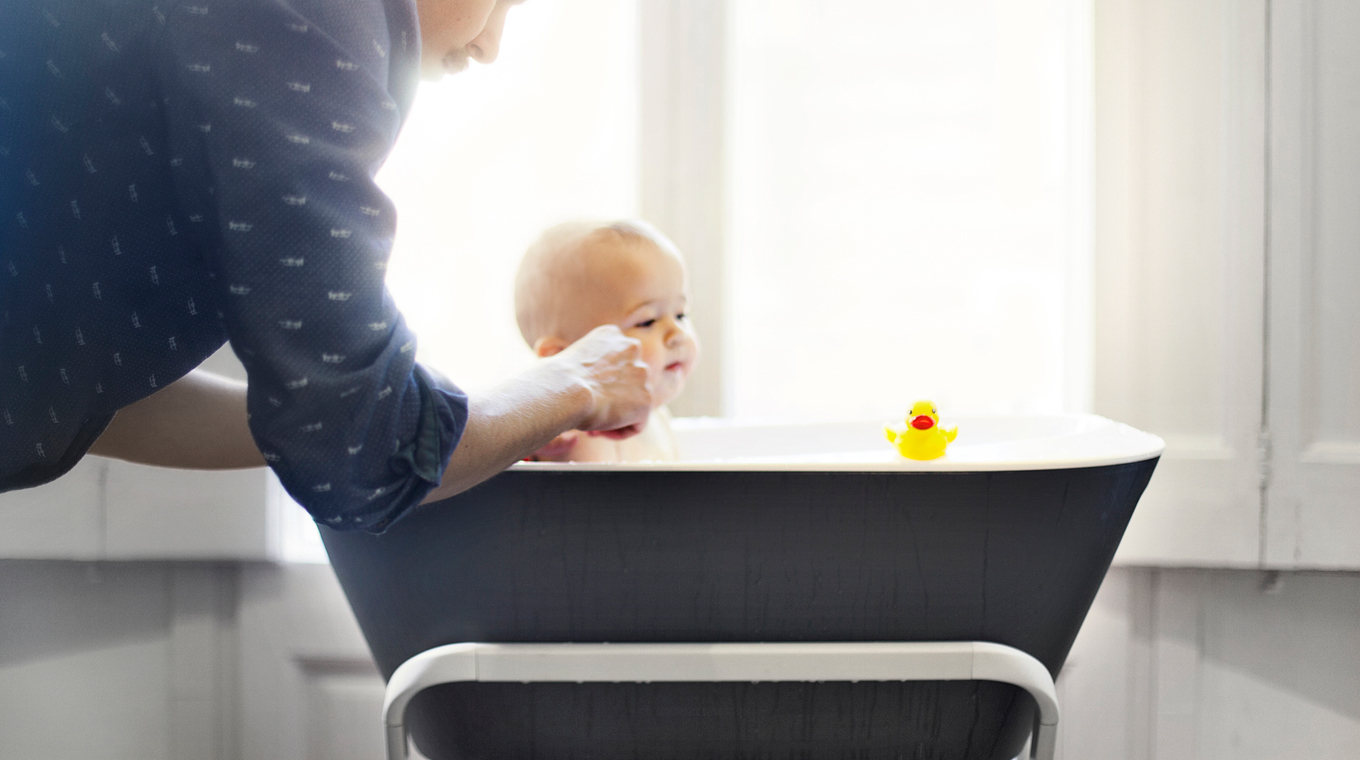
In this article
One of my favorite pictures of my son is him being held by my mom as she gave him his first bath. He caught a glimpse of himself in the mirror with a look of wonder on his face. One thing is for certain, I’m glad my mom said she would give him his bath since I was nervous about every aspect of it — most of all losing my hold of him and disaster happening.
Of course, it just took time for me to build confidence and my son to love the water. Here's what you need to know about how to bathe a baby.
Baby's first bath: How to bathe a newborn

A 2019 study suggests waiting 48 hours before giving your newborn a bath to help keep their temperature even and help with skin development. When you do bathe a newborn, you want to make sure to not submerge the baby in water. The umbilical cord’s stump is still prone to infection and you want to wait for that to fall off before submerging your baby.
Dr. Sears recommends that before you begin, you put together a newborn bathing kit to include items such as wash cloths, mild soap, cotton balls, cotton-tip applicators and a hooded towel. (Remember to keep all items safely out of baby's reach.)
Newborn bathing is more of a sponge bath using a washcloth and mildly soapy water. Newborns don't have the neck muscles to support their heads, so remember to support their heads and keep your hands on them at all times. Use a washcloth in gentle circles on your baby’s head to address any cradle cap they have. Smooth the hair out and wipe the soap away with another damp washcloth.
Your baby shouldn’t be too dirty since he isn’t really doing much else other than sleeping and eating. This means you can initially start with a bath a couple of times a week with warm water that you test on your wrist. You may give your baby more frequent baths if he spits up a lot and dribbles down his chin and chest.
Remember: Infants or toddlers should never be left unattended while in the bath, since they can drown in even an inch of water.
How to bathe your one to three months-old baby

Once your baby’s umbilical cord stump falls off, you can transition them into a more traditional type of bath. Continue to keep a schedule of once or twice a week for bath time. Use a baby tub that supports their body and keeps their head out of the water. Make sure the water temperature is lukewarm by placing your wrist in it. Using a washcloth, start with the face and work your way down.
Three months and on
At age three months, your baby may or may not need a bath more frequently than a couple of times per week. Some parents like to get into the habit of daily baths, especially if kids like to play in the water. If you do give them baths more than twice a week, don’t use soap in all of them. Doing so could dry out your baby’s delicate skin and lead to rashes and discomfort. Use a baby lotion after bath to keep skin smooth and moisturized.
To keep bathtime interesting and fun, add some bath toys. “Make sure all the bathtime items are in one basket or Tupperware so you are prepared before you get started," Mom of a toddler, Dhanya G., suggested to Mom.com. "This will make sure bathtimes are a stress-free time for you and baby.”
Who doesn’t love their rubber duckie? The goal is to get your baby to enjoy bathtime so he looks forward to it as he gets older.
What you'll need to bathe your baby

Besides the previously mentioned baby bathing kit recommended by Dr. Sears, you'll need a good, safe baby bathtub and gentle bathing products. Here are a few suggestions.
Bath Bath Tub
Baby bath tubs come in various designs, from a simple bath bucket with infant support to high-tech tubs that have thermometers in them keep track of the water temperature. The best tub is easy for you to use and helps you control your baby, keeping her in a safe position
Baby bath products
It’s important to use baby-friendly products when giving your baby a bath. Most moms know to buy gentle, no-tears soap. To prevent allergies, avoid things with fragrances – just enjoy that clean baby smell. Look for products that don’t have a lot of artificial ingredients; these will be gentler on your baby’s skin and help prevent rashes or allergies from developing.
Dr. Samantha Radford — who has a Ph.D. in chemistry and runs the website Evidence-Based Mommy — further warned Mom.com readers to read labels carefully for chemicals that could be dangerous to your baby. “Choose bath products that are phthalate-free. Phthalates are chemicals often found in bath products that have been linked to reproductive effects, developmental effects, and even cancer," she said. "And because these chemicals aren't required to be listed in ingredients (they can hide under fragrances) you'll need to choose a product that specifically says it's phthalate-free.”
Remember that your baby is developing in all ways. Bathtime serves a purpose in keeping them clean and healthy and should never put them in harm’s way. Paying attention to little details about products can make the difference for your baby down the road.







